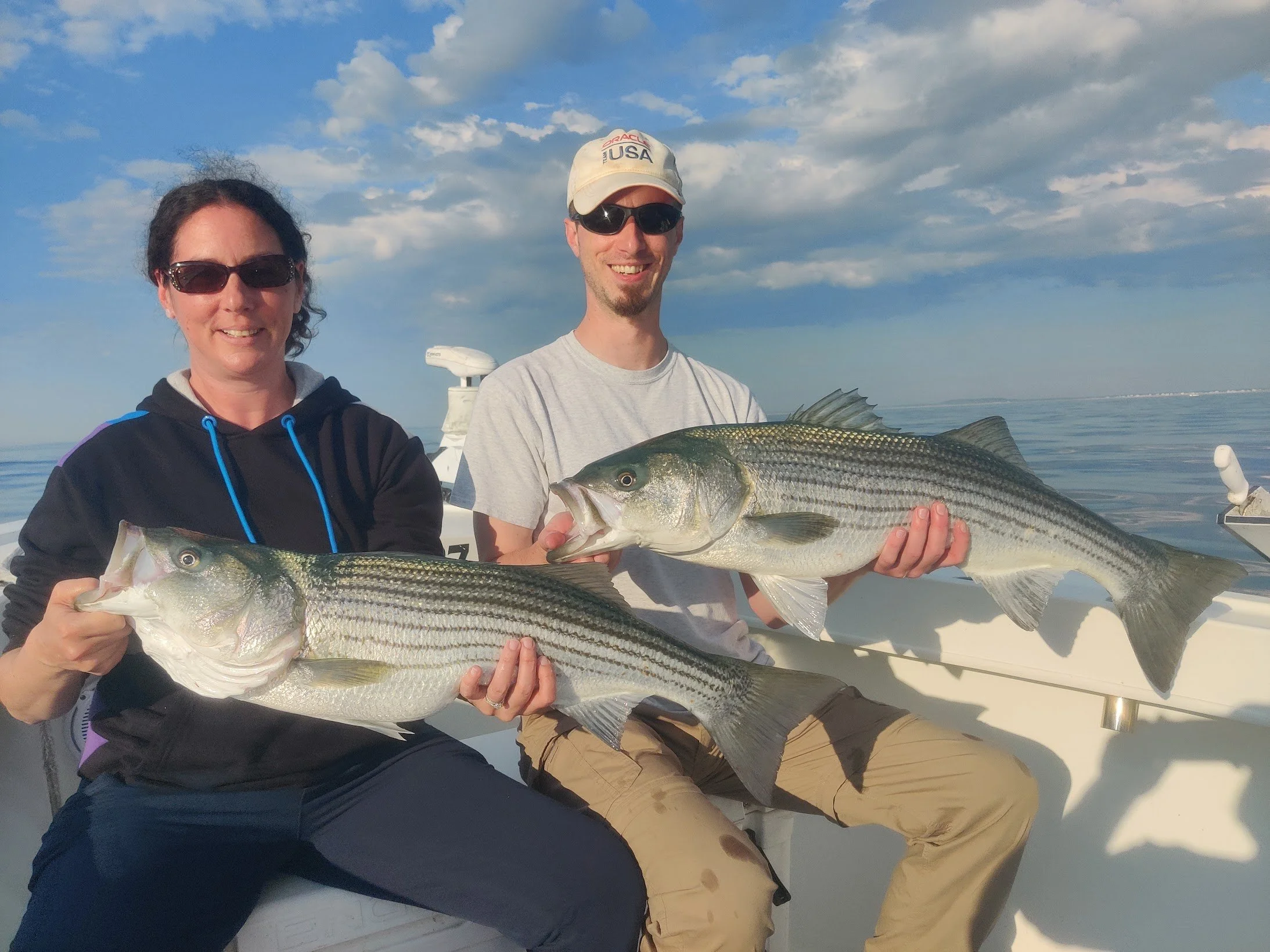Trolling Live Bait For Stripers: Beginner to Ninja
Fishing in the northeast requires anglers to be well-rounded in their techniques to catch fish consistently as the seasons, and the stripers' feeding habits change. To be successful, you can't be a one-trick pony, even if that requires you to use a technique you may not love. Trolling gets a bad rap as being slow and tedious, but I find the contrary true. Most of my dynamite fishing days have been trolling live bait in the river or the ocean. Once you find the pod of fish, you can have a field day. There are so many ways to troll live bait, and certain places fish differently than others, but you can keep it as simple as possible or crank it up to Ninja Level precision. In this blog series, we will go over trolling techniques for three different skill levels:
Beginner
Advanced
Ninja
Before we get into how to troll live baits, let's list some fundamental axioms to abide by, no matter which level you are at:
Rods and Reels - You can use either spinning reels, conventional reels, or baitrunner reels for this type of fishing. For trolling specifically, I like softer action rods to absorb the strike. I prefer to use conventional reels for their inherent line capacity, stopping power, and loud clickers over spinning reels. You can fish mono or braid as mainline, but I feel we get better hooksets with braid and a long 20 ft mono top shot before tying off to the leader. Dan and I use Seigler SG's on Tsunami Slow Pitch rods, Mike uses Okuma Metaloid 5's on Custom Rainshadow Rods, and John uses Shimano Thunnus spinning reels on Diawa Harrier rods.
Troll Slow - Ideally, I want my boat speed to be between 0.5 - 3 mph. When looking for fish, I will troll just under three mph; when I find them, I will slow down to around one mph.
Fish as many rods as you can handle without making a mess. I can barely keep up with three rods when I'm fishing solo, and that is WITH autopilot.
Weighted Lines - When I discuss weighted lines, we use the same rigs we use to drift fish in the river. The rig is simple and consists of an egg sinker on the mainline, which attaches to a swivel to a 3 ft leader of 40# flourocarbon to an 8/0 circle hook. On my boat, we use the uni knot for terminal connections.
Understand Your Electronics - Set your electronics to show your chart and fish finder. If you have it, Side Imaging is also incredibly beneficial in finding success when trolling. My Humminbird Apex is fantastic at picking up schools of fish and structure, but when paired with the highly detailed Coastmaster Charts, I can find all kinds of ambush points where the big bass will be lurking. It would be best if you were running a "track line" to follow your path and know how to drop a MOB Waypoint over a school of fish or where you got a bite. Wow, this may be a whole blog in itself!
Use Visual Aids on the Water - A string of lobster points, a tide line, and a house on the shore are some examples to keep an eye on to use a quick reference point to keep you on the fish.
Keep a Network - Splitting up and working in different places with other boats can help you cover more ground as long as the people you work with respectfully keep that info to themselves and are courteous when you call them in.
Trolling Drag Settings- I'm always on the fence if I want to use light drag to let them run for a few seconds and then whack them with stopping power or just fish locked up and take my chances. If I'm getting killed by short-striking schoolies, I will opt to let it run before engaging the drag. My thoughts on trolling drags have evolved over the past few years, and now I'm a believer in fishing the drag locked up. We either come tight or don't, but the hookup ratio seems much higher than letting the fish run.
Bait Hooking - Mackerel will take a circle hook centered through the top jaw, and pogies will be bridled using a rubber band and a needle.
Read each section - To completely grasp the fundamental thought process and vocabulary, I suggest you read each section in order, no matter what "level" you consider yourself.
Part I - Beginners
To continue this article, please become a member of Mouths of the Merrimack!
Join the team for only $7a month to unlock: * Members Only Podcast Clips * Private Facebook Group for Quick Community Communication * Free Raffle Tickets at Events * Live Special Podcast Access * Free Webinar Classes * Discounts on Fishing Related Items


